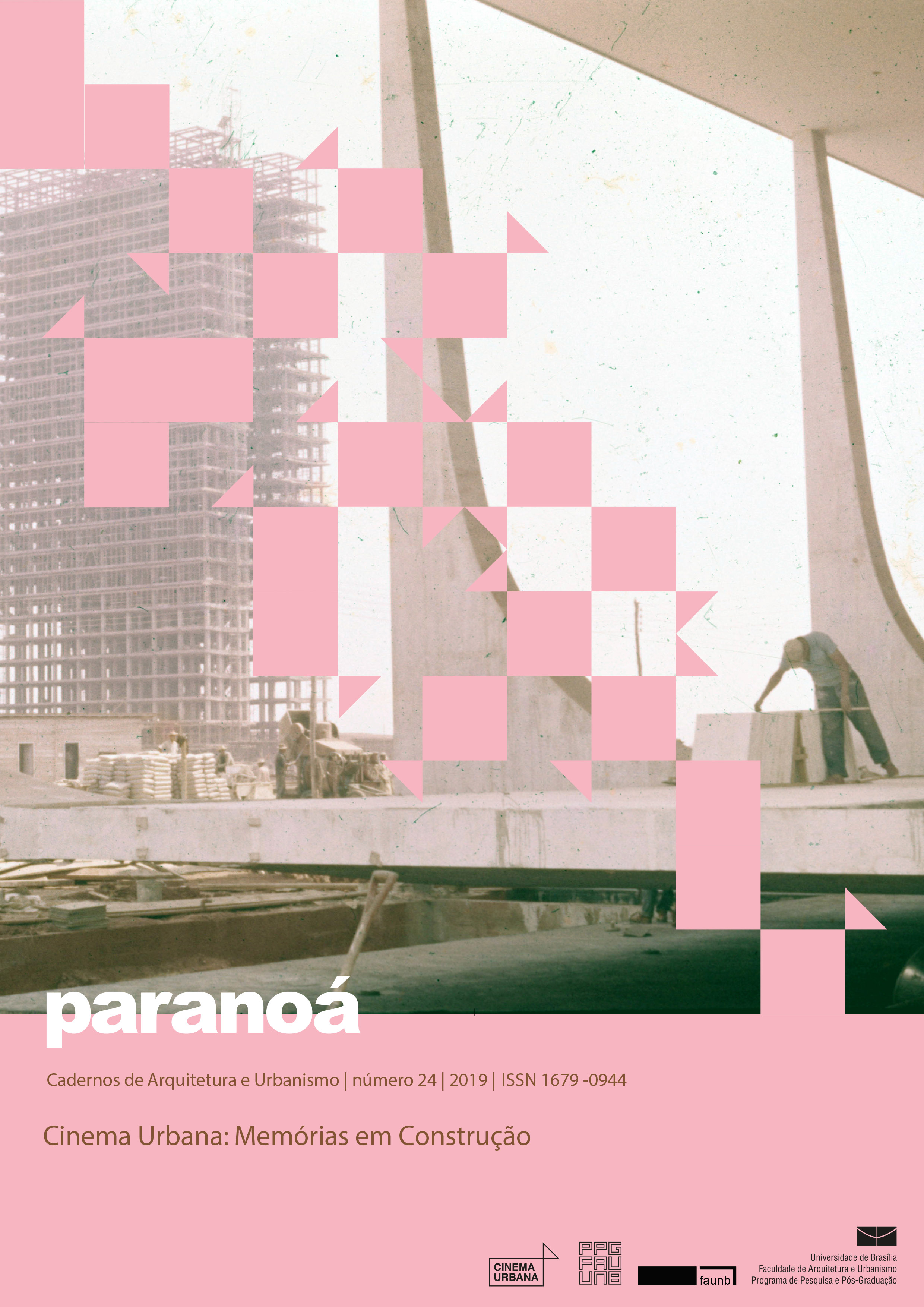A paisagem da Baía de Guanabara através do filme Luz Del Fuego
DOI:
https://doi.org/10.18830/issn.1679-0944.n24.2019.15Keywords:
Guanabara`s Bay, Luz del Fuego, female narrative, representationAbstract
The paper discusses the landscape of Guanabara`s Bay through David Neves' film, Luz del Fuego (1982). Starting from the understanding that the Bay conforms a collective memory space that occurs not only in the past, but also in the present, we seek to understand the current relationship of the population of Rio de Janeiro with the Bay. Denis Cosgrove (1989) assists us by identifying multiple types of symbolic landscapes within them: dominant culture landscape and alternative landscape. The analyzed film tells the story of the dancer Dora Vivacqua, an important woman for female liberation in Rio de Janeiro. And has a particular look on the Bay, housing and scene of the death of the protagonist. During the film narrative it is necessary to look not only at the landscape optics of the dominant culture, but also at the alternative landscape, described by Cosgrove, as well as a gender problem, where there is often the erasure of female narratives. Women are part of the culture excluded from the public landscape, since women's use of the landscape has long been the domestic landscape. What Luz del Fuego breaks dramatically, giving unexpected use to an island of Guanabara`s Bay in the 1960s.
Downloads
References
CALVINO, Italo. As Cidades Invisíveis. São Paulo: Folha, 2003.
CARVALHO, Anna Maria Fausto Monteiro de. A Baía de Guanabara Os itinerários da memória. São Paulo: Revista USP, 1996.
CORRÊA, Armando Magalhães. (Org.); VIEIRA, Antônio Carlos Pinto. A Guanabara como natureza: Águas Cariocas. 1ª ed. - Rio de Janeiro: Outras Letras, 2016.
COSGROVE, Denis. A geografia está em toda parte: cultura e simbolismo nas paisagens humanas. In: Corrêa, Roberto Lobato e Rosendahl, Zeny (orgs.). Paisagem, Tempo e Cultura.Rio de Janeiro, EdUERJ, 1998.
DELEUZE, Gilles. Cinema 1 - A imagem-movimento / Gilles Deleuze; tradução de Stella Senra - São Paulo: Editora 34, 2018 (1ª edição).
GUATTARI, Félix, ROLNIK, Sueli. Micropolíticas: cartografias do desejo. Petrópolis: Vozes, 1996. [1986]. (6. Revoluções moleculares: o atrevimento de singularizar. Pp. 45-65)
HALBWACHS, Maurice. A memória coletiva. São Paulo: Ed. Centauro, 2006.
HALL, Stuart. Cultura e representação. Rio de Janeiro: PUC, 2016.
LIMA, Edvaldo Pereira. et al. retratos da baía. Rio de Janeiro: FAPERJ, 1994.
MESENTIER, Leonardo Marques de; LIMA, Evelyn Furquim. A Paisagem da Baía de Guanabara: patrimônio, segregação e desenvolvimento. Rio de Janeiro. XV Seminário de História da Cidade e do Urbanismo, 2018.
ROSSI, Aldo. A arquitetura da cidade. Tradução de Eduardo Brandão. 2ª ed. São Paulo: Martins Fontes, 2001.
_________. Uma arquitetura analógica. In: NESBITT, Kate (Org.). Uma nova agenda para a arquitetura: antologia teórica 1965-1995. 2. ed. São Paulo: Cosac Naify, 2008. p. 379-384.
SARTHOU, Carlos. Passado e Presente da Baía da Guanabara. Rio de Janeiro: Livraria Freitas Bastos S.A., 1964.
LUZ Del Fuego - O Filme. Direção: David Neves. Rio de Janeiro: (produtora), 1982. Disponível em: <https://www.youtube.com/watch?v=mn-uv0dI9nA>. Acesso em: 24/06/2019.
TED Chimamanda Ngozi Adichie e o perigo da história única. Disponível em: <https://www.ted.com/talks/chimamanda_adichie_the_danger_of_a_single_story?language=pt-br - t-1109987>. Acesso em: 10/08/2019.
Downloads
Published
How to Cite
Issue
Section
License
Autores que publicam nesta revista concordam com os seguintes termos:
- Autores mantém os direitos autorais e concedem à revista o direito de primeira publicação, com o trabalho simultaneamente licenciado sob a Licença Creative Commons Attribution que permite o compartilhamento do trabalho com reconhecimento da autoria e publicação inicial nesta revista. http://creativecommons.org/licenses/by/4.0
- Autores têm autorização para assumir contratos adicionais separadamente, para distribuição não-exclusiva da versão do trabalho publicada nesta revista (ex.: publicar em repositório institucional ou como capítulo de livro), com reconhecimento de autoria e publicação inicial nesta revista.
- Autores têm permissão e são estimulados a publicar e distribuir seu trabalho online (ex.: em repositórios institucionais ou na sua página pessoal) a qualquer ponto antes ou durante o processo editorial, já que isso pode gerar alterações produtivas, bem como aumentar o impacto e a citação do trabalho publicado (Veja O Efeito do Acesso Livre).















